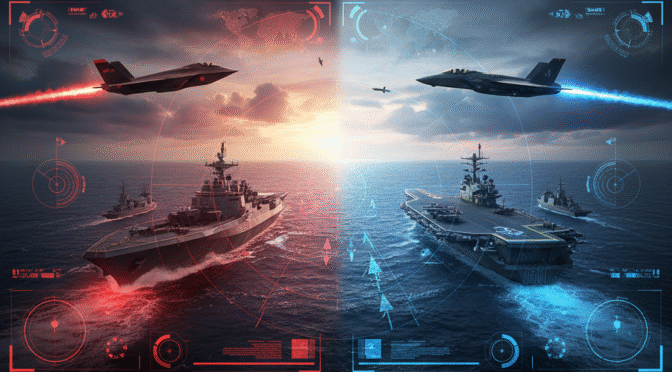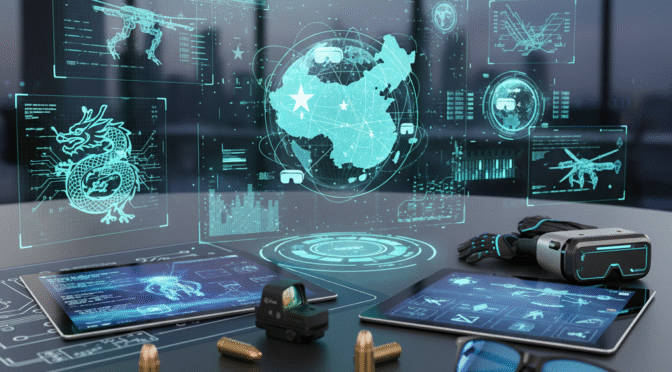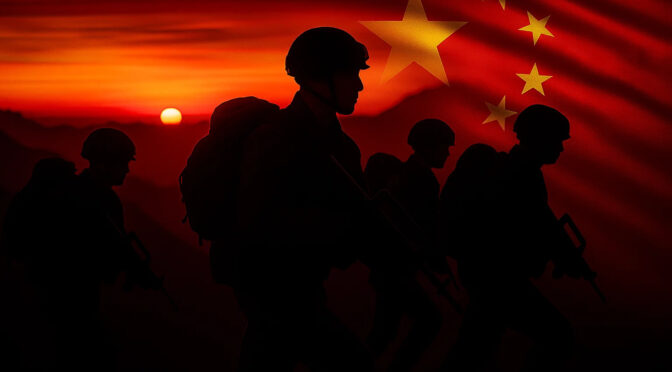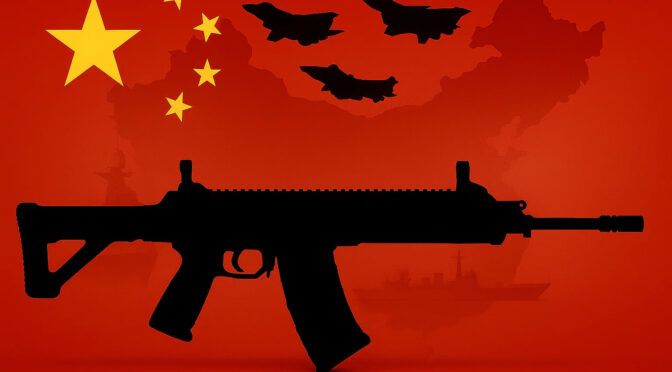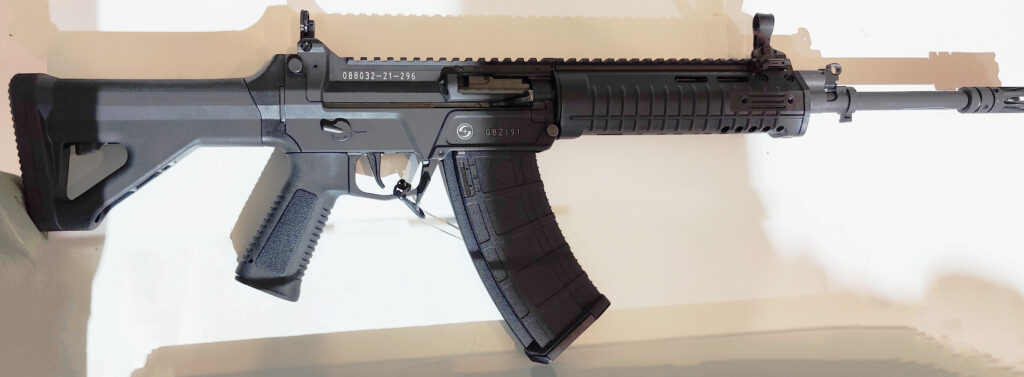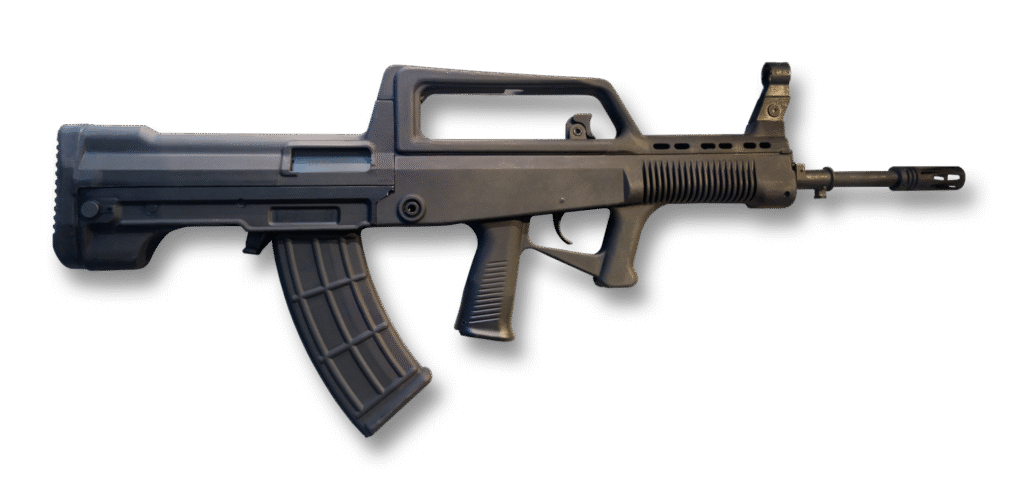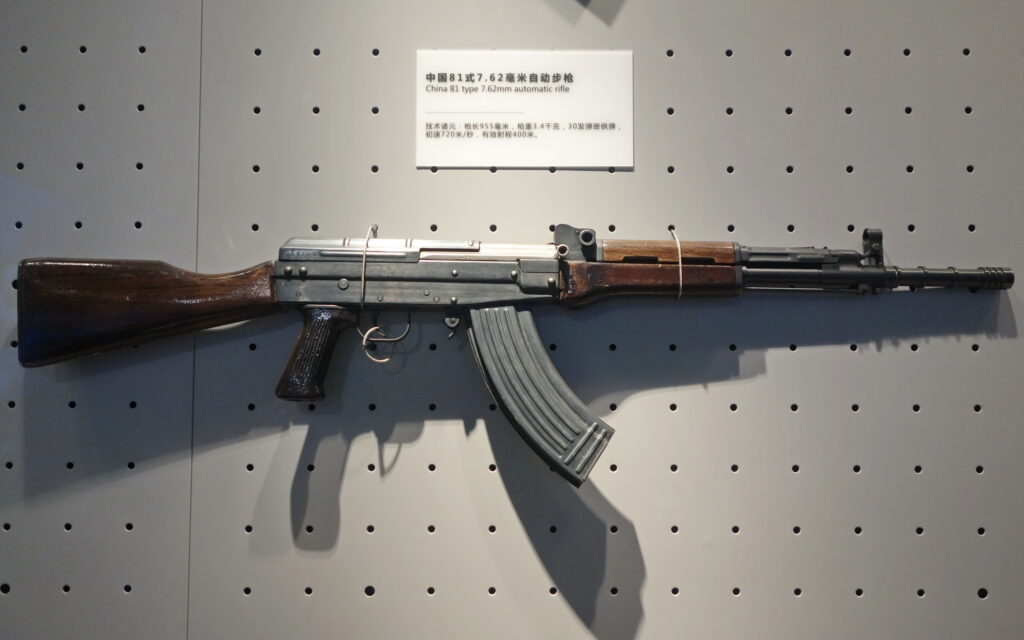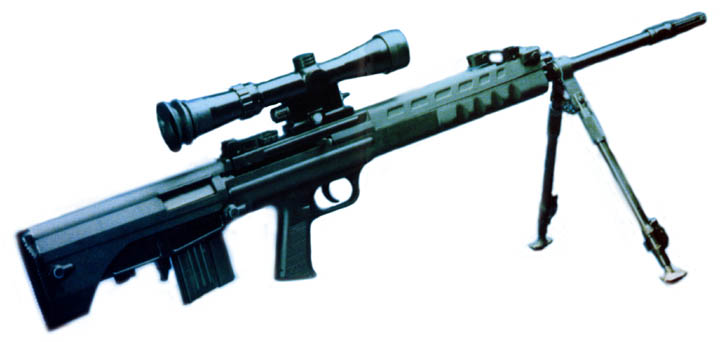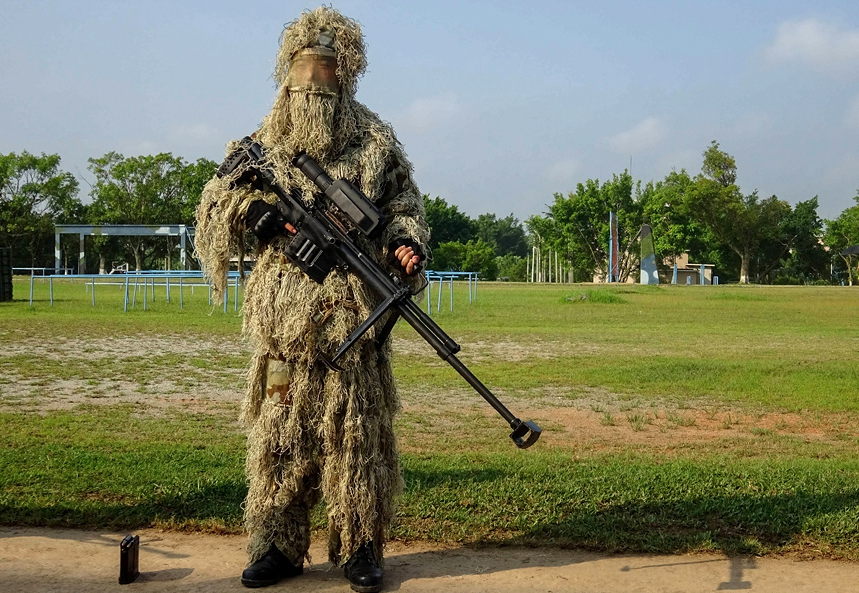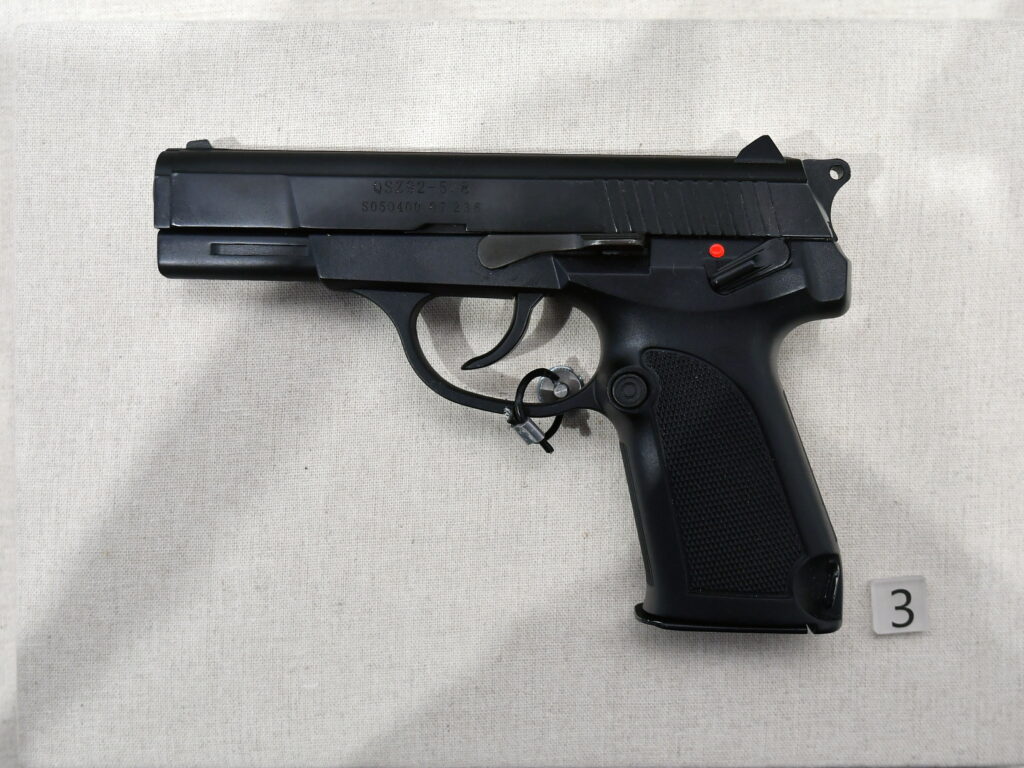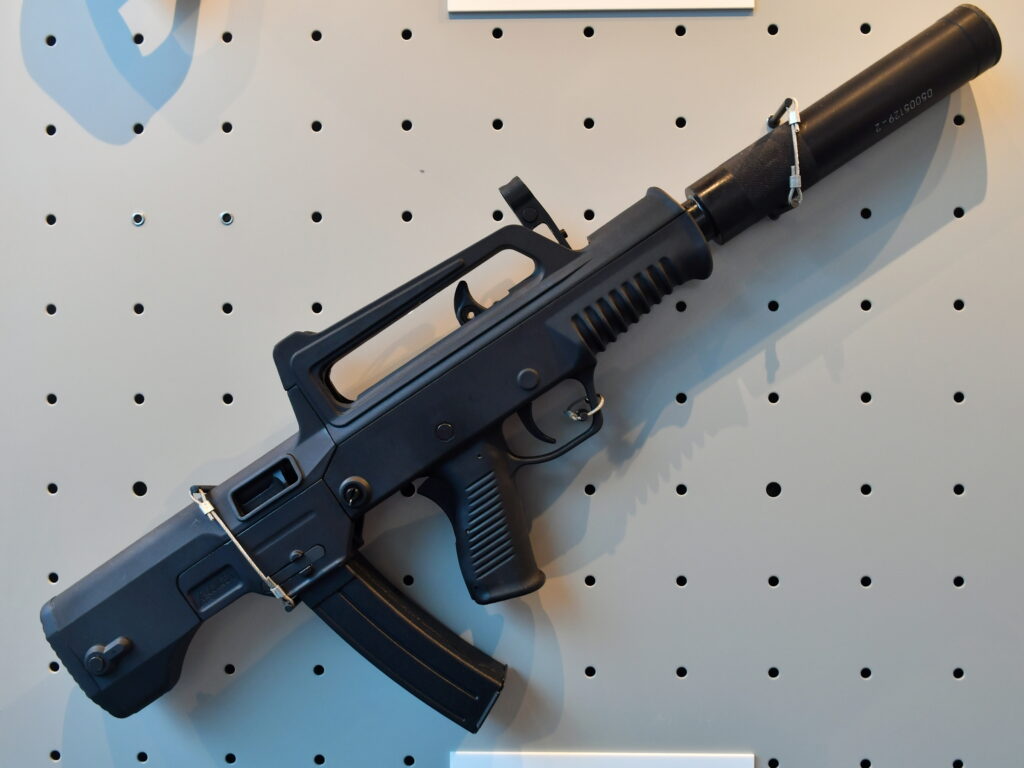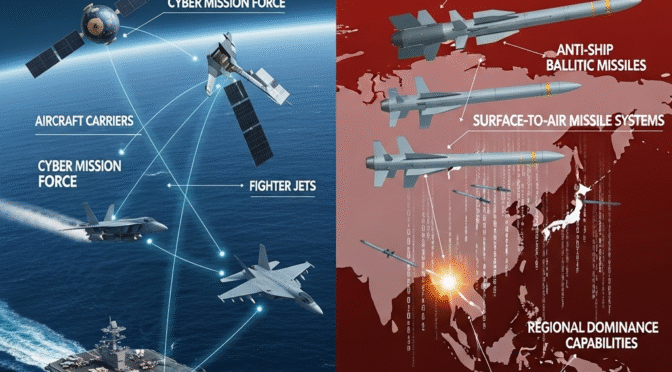A potential high-intensity conflict in the Western Pacific would represent the most significant military challenge for the United States in generations. It would not be a simple contest of platforms—ship versus ship or aircraft versus aircraft—but a fundamental confrontation between two opposing military philosophies, doctrines, and operational systems. The People’s Liberation Army (PLA) has spent three decades developing a comprehensive warfighting approach designed specifically to counter U.S. power projection. This approach is rooted in the concept of “Systems Confrontation” , a doctrine aimed at paralyzing an adversary’s entire operational architecture rather than attriting its forces piece by piece. This doctrine is operationalized through a formidable Anti-Access/Area Denial (A2/AD) fortress, a multi-layered network of sensors and long-range precision weapons intended to make the seas and skies within the First and Second Island Chains prohibitively dangerous for U.S. forces.
The U.S. response to this challenge is not to match the PLA system for system, but to counter with a doctrine based on resilience, agility, and networked lethality. The core tenets of this counter-strategy are Distributed Maritime Operations (DMO) and Joint All-Domain Command and Control (JADC2). DMO seeks to enhance survivability and combat power by dispersing naval forces over wide areas while concentrating their effects through networking. JADC2 is the technological and doctrinal framework intended to create a resilient, self-healing, “any sensor, any shooter” network that connects the entire joint force across all domains—sea, air, land, space, and cyberspace.
From a commander’s perspective, the central problem is how to maintain combat effectiveness and project power when faced with a PLA strategy explicitly designed to sever command and control (C2) linkages, hold high-value assets like aircraft carriers at extreme risk, and overwhelm conventional defenses with massed fires. In this environment, victory will not be determined by material superiority alone. It will be decided by which side can achieve and maintain “decision advantage”—the ability to sense, make sense, decide, and act faster and more effectively than the adversary across the entire battlespace. This assessment identifies the five most probable and impactful strategies a PLA commander will employ and outlines the corresponding U.S. operational responses required to seize the initiative and prevail.
| Warfighting Function | U.S. Doctrine/Concept | PLA Doctrine/Concept |
|---|---|---|
| Command & Control | Joint All-Domain Command & Control (JADC2) | Systems Destruction Warfare / Informatized Warfare |
| Force Employment | Distributed Maritime Operations (DMO) | Anti-Access/Area Denial (A2/AD) |
| Strategic Goal | Escalation Dominance / Deterrence | Dissipative Warfare / Winning Without Fighting |
| Technological Edge | Human-Machine Teaming / AI Augmentation | Intelligentized Warfare / AI-Driven C2 |
| Operational Method | Integrated, All-Domain Maneuver | Concentrated Kinetic Pulse / Annihilation by Mass |
I. PLA Strategy 1: The System-Centric Opening Salvo – Paralyze Before You Annihilate
The Chinese Commander’s Approach: Systems Destruction Warfare in Practice
The PLA’s “basic operational method” for modern warfare is “Systems Confrontation,” a concept that views military forces not as collections of individual units but as integrated “systems of systems”. The PLA’s theory of victory, therefore, is “Systems Destruction Warfare,” which prioritizes fragmenting the adversary’s operational system into isolated, ineffective components, thereby achieving a state where the whole is less than the sum of its parts—making “1+1<2”. This doctrine, developed from meticulous observation of U.S. network-centric military victories in the 1990s, is designed to turn a core American strength—our reliance on information networks—into a critical vulnerability. The objective of the opening salvo is not annihilation but paralysis: to degrade the U.S. OODA (Observe, Orient, Decide, Act) loop, sow confusion, and achieve decision paralysis before the main kinetic battle is joined.
This initial assault will be a simultaneous, multi-domain attack targeting the central nervous system of U.S. forces in the theater. The PLA’s organizational reforms, particularly the 2015 creation of the Strategic Support Force (SSF) to unify space, cyber, and electronic warfare capabilities, provide concrete evidence that this is not an abstract theory but a core, operationalized warfighting concept. The attack vectors will include:
- Cyber Domain: In line with its doctrine of “informatized warfare,” the PLA will execute a sophisticated campaign of offensive cyber operations. The primary targets will be the command and control networks that enable joint operations, as well as logistics databases and information systems architectures. The goal is to corrupt data, disrupt communications, and inject malware that degrades the reliability of the information upon which commanders depend, creating widespread confusion and mistrust in our own systems.
- Space Domain: The PLA recognizes U.S. dependency on space-based assets for C4ISR, precision navigation, and timing. The opening moves of a conflict will almost certainly include attacks on this architecture. These attacks will be both kinetic, using anti-satellite (ASAT) missiles to physically destroy key nodes, and non-kinetic, employing jamming and cyberattacks to temporarily disable or deceive our satellites. The objective is to blind our long-range sensors and sever the satellite communication (SATCOM) links that are the backbone of our networked force, effectively isolating combatant formations from each other and from strategic command.
- Electromagnetic Spectrum: A pervasive electronic warfare (EW) campaign will seek to establish dominance in the electromagnetic spectrum. Specialized aircraft, such as the J-16D, will be deployed to jam U.S. radars, datalinks like Link-16, and GPS signals. This creates a “complex electromagnetic environment” designed to degrade situational awareness, disrupt weapon guidance systems, and sever the tactical data links between platforms, preventing them from operating as a cohesive force.
- Targeting Key Physical Nodes: This non-kinetic assault will be complemented by precision strikes against the physical infrastructure of our command and control system. Using their arsenal of conventional ballistic and cruise missiles, the PLA will target fixed, high-value C2 nodes such as regional Air Operations Centers, major headquarters, and critical communications hubs located on U.S. and allied bases throughout the theater.
U.S. Commander’s Response: JADC2 and Doctrinal Resilience
The U.S. counter to a system-centric attack is not to build an impenetrable shield, but to field a system that is inherently resilient, adaptable, and capable of operating effectively even when degraded. This is the core purpose of the Joint All-Domain Command and Control (JADC2) concept. JADC2 is not a single piece of hardware but an overarching approach to creating a secure, cloud-like environment for the joint force, enabling any sensor to connect to any shooter. The immediate operational priority is to fight through the initial salvo by assuming that some networks will fail and that communications will be contested.
- Activating the Resilient Network: The JADC2 framework must be designed for failure. It cannot be a brittle, centralized system. It must incorporate redundant communication pathways, including line-of-sight datalinks, laser communications, and dispersed satellite constellations, to ensure that multiple routes exist for critical data. The principle is to create a “self-healing” network that can automatically re-route traffic around damaged or jammed nodes.
- Decentralization and Edge Processing: A key enabler of resilience is the principle of decentralization, a core tenet of Distributed Maritime Operations. Commanders at the tactical edge must be trained and equipped to operate with mission-type orders, empowered to make decisions based on the commander’s intent even when cut off from higher headquarters. This requires “edge computing” capabilities, where data is processed and analyzed locally on ships and aircraft, allowing them to generate targeting solutions and continue the fight without constant connectivity to a central command node.
- Leveraging Survivable Nodes: Stealth platforms are critical to this resilient architecture. An F-35, for example, is far more than a strike fighter; it is a flying sensor-fusion engine and a survivable, forward-deployed node in the JADC2 network. Operating within contested airspace, F-35s can use their passive sensors to collect vast amounts of intelligence on enemy dispositions, process that data onboard, and securely share it with other assets—both airborne and surface—to create a localized, ad-hoc battle network that can bypass jammed satellite links or compromised command centers.
- Proactive Defense (“Defend Forward”): U.S. cyber forces will not be in a passive, defensive posture. In accordance with the “defend forward” doctrine, U.S. Cyber Command will be continuously engaged within adversary networks, seeking to understand their intentions, disrupt their C2 processes, and counter their offensive operations at or before the point of origin. This is a critical element of imposing friction and cost on the PLA’s system as they attempt to do the same to ours, turning the initial phase of the conflict into a contested cyber and electronic battle for information dominance.
II. PLA Strategy 2: The A2/AD Fortress – Forcing a Standoff
The Chinese Commander’s Approach: Operationalizing the “Keep-Out Zone”
The operational centerpiece of the PLA’s strategy is its Anti-Access/Area Denial (A2/AD) system. This is not a simple wall of defenses but a sophisticated, layered defense-in-depth designed to make military operations within the First and Second Island Chains prohibitively costly, thereby deterring U.S. intervention or defeating it if it occurs. The effectiveness of the A2/AD bubble does not rely on any single weapon but on the integrated “system of systems” that connects long-range sensors to long-range shooters. The entire kill chain—from detection and tracking to targeting and engagement—is the true center of gravity of this strategy. The PLA’s militarization of artificial islands in the South China Sea serves as a crucial geographic enabler, creating unsinkable forward bases that extend the reach of their sensor networks and missile coverage, creating overlapping fields of fire that are difficult to circumvent.
The A2/AD fortress is composed of distinct but overlapping layers of kinetic threats:
- Long-Range Fires (Anti-Access): The outer layer is designed to prevent U.S. forces, particularly Carrier Strike Groups and air assets, from entering the theater of operations. This mission is primarily assigned to the PLA Rocket Force (PLARF). Its key systems include the DF-21D anti-ship ballistic missile (ASBM), with a range of approximately 1,500 km, and the DF-26 intermediate-range ballistic missile, dubbed the “Guam Killer,” with a range of at least 3,000 km. These weapons are designed to strike large, moving targets like aircraft carriers. This layer is increasingly augmented by hypersonic weapons, such as the DF-17, which carries a hypersonic glide vehicle (HGV). The extreme speed (Mach 5-10) and unpredictable, maneuvering trajectory of the HGV are designed to defeat existing U.S. missile defense systems like Aegis and THAAD.
- Theater-Range Fires (Area Denial): The inner layers of the A2/AD bubble are designed to limit the freedom of action of any U.S. forces that manage to penetrate the outer screen. This involves a dense and redundant network of advanced anti-ship cruise missiles (ASCMs), such as the supersonic YJ-12 and the subsonic, sea-skimming YJ-18. These missiles can be launched from a wide variety of platforms, creating a multi-axis threat: from mobile land-based launchers, from H-6K bombers, from surface combatants like the Type 055 destroyer, and from submarines, including the Type 093 nuclear attack submarine.
- The Protective IADS Umbrella: The PLA’s offensive missile forces are protected by one of the world’s most robust and modern Integrated Air Defense Systems (IADS). This system combines advanced Russian-made S-400 and S-300 long-range surface-to-air missile (SAM) systems with domestically produced systems like the HQ-9, HQ-22, and the newer, exo-atmospheric HQ-29 interceptor. This network of SAMs is linked by an extensive array of ground-based radars and airborne early warning and control (AEW&C) aircraft, such as the KJ-500A and KJ-600, giving it the capability to detect, track, and engage a wide spectrum of aerial threats, from cruise missiles to 5th-generation stealth aircraft.
| System Designation | Type | Estimated Range (km) | Launch Platforms | Primary Role/Target |
|---|---|---|---|---|
| DF-26 | Intermediate-Range Ballistic Missile (IRBM) | 3,000+ | Transporter Erector Launcher (TEL) | U.S. Carrier Strike Groups, U.S. Bases (Guam) |
| DF-21D | Anti-Ship Ballistic Missile (ASBM) | 1,500-1,700 | TEL | U.S. Carrier Strike Groups |
| DF-17 | Medium-Range Ballistic Missile w/ HGV | 1,800-2,500 | TEL | High-Value U.S. Assets (Carriers, Bases, C2 Nodes) |
| YJ-18 | Anti-Ship Cruise Missile (ASCM) | ~540 | Type 055/052D Destroyers, Submarines | U.S. Surface Combatants |
| YJ-12 | Supersonic ASCM | ~400 | H-6K Bombers, J-16 Fighters, Destroyers | U.S. Surface Combatants |
| S-400 Triumf | Long-Range Surface-to-Air Missile (SAM) | 40-400 (missile dependent) | TEL | U.S. 4th/5th Gen Aircraft, Bombers, Support Aircraft |
| HQ-9C | Long-Range SAM | 300+ | TEL | U.S. 4th/5th Gen Aircraft, Cruise Missiles |
U.S. Commander’s Response: Multi-Domain Disintegration of the A2/AD Network
A direct, frontal assault on a mature A2/AD system would be prohibitively costly. The U.S. response must therefore be an indirect, multi-domain campaign designed to systematically dis-integrate the A2/AD network by attacking its critical nodes and severing the links of its kill chain. The goal is not to destroy the entire system at once, but to create temporary and localized corridors of air and sea control, allowing our forces to project power for specific objectives. This campaign will unfold in phases.
- Phase 1: Blinding the Enemy. The initial focus will be on dismantling the A2/AD C3ISR architecture, rendering the PLA’s long-range shooters ineffective.
- Subsurface Operations: Our nuclear-powered attack and guided missile submarines (SSNs and SSGNs) are our most survivable and potent assets for this phase. Operating undetected deep inside the A2/AD bubble, they will conduct covert intelligence, surveillance, and reconnaissance (ISR) to map the enemy’s network. They will then use their significant payload of Tomahawk Land Attack Missiles to execute precision strikes against critical C3ISR nodes, such as coastal over-the-horizon radar sites, satellite ground stations, and hardened command bunkers.
- Penetrating Air Operations: Stealth aircraft are essential for creating the initial breaches in the formidable IADS. Long-range B-2 and B-21 bombers, escorted by F-22 Raptors providing air superiority, will prosecute the most heavily defended, high-value targets, such as S-400 batteries and key command centers. F-35s will leverage their advanced sensor suites to passively locate and map enemy air defense emitters, feeding this real-time data back into the JADC2 network to enable dynamic re-tasking and follow-on strikes by other assets.
- Phase 2: Rolling Back the Threat. Once the IADS umbrella has been degraded in specific corridors, we can begin to attrit the PLA’s offensive missile launchers with a lower degree of risk.
- Standoff Strikes: Carrier Strike Groups and land-based bombers, operating from safer standoff distances outside the densest threat rings, will launch large volleys of long-range, stealthy weapons like the Long Range Anti-Ship Missile (LRASM) and the Joint Air-to-Surface Standoff Missile (JASSM). These weapons will be used to destroy the now-exposed and less-defended mobile launchers for the DF-21D, DF-26, and ASCMs.
- Non-Kinetic Suppression: Throughout these operations, EA-18G Growler electronic attack aircraft will provide crucial support. They will jam enemy early warning and fire control radars, disrupt communications between command posts and launch units, and protect our strike packages from residual air defense threats, further contributing to the dis-integration of the A2/AD network.
By executing this phased campaign, we can systematically dismantle the A2/AD fortress, creating breaches that allow for the projection of decisive combat power.
III. PLA Strategy 3: The Overwhelming Kinetic Pulse – Annihilation by Mass
The Chinese Commander’s Approach: The Decisive Attack
While the PLA has embraced sophisticated, system-centric warfare, this has not replaced its foundational belief in the importance of mass and annihilation. A core PLA tactical principle, influenced by both Soviet and historical Chinese military thought, is to concentrate overwhelming power at a decisive point and time to annihilate the enemy force—to “use ten against one”. The “Systems Destruction” opening is the shaping operation designed to isolate and weaken a U.S. force element, such as a Carrier Strike Group. The overwhelming kinetic pulse is the decisive operation intended to destroy that isolated element. By degrading the CSG’s long-range sensors and disrupting its datalinks, the PLA hopes to force it into a reactive, close-in fight where numerical superiority can be brought to bear with devastating effect.
A PLA commander will leverage the sheer size of the PLA Navy—the world’s largest by number of ships—and the PLA Air Force to execute a massive, coordinated, multi-axis saturation attack designed to overwhelm the defensive capacity of a CSG. This attack will be characterized by:
- Massed Missile Strikes: The assault will involve synchronized volleys of missiles from every domain to complicate our defensive problem. This will include waves of H-6K bombers launching long-range ASCMs from the air ; Surface Action Groups led by Type 055 and Type 052D destroyers firing their own large complements of YJ-18 ASCMs ; and covert strikes from submarines, such as the Type 093 SSN, firing submerged-launched cruise missiles.
- Contesting Air Superiority: The PLA’s J-20 stealth fighters will be tasked with a critical enabling mission: hunting and destroying U.S. high-value air assets. Their primary targets will not be our fighters, but our force multipliers: the E-2D Hawkeye AEW&C aircraft that act as the eyes and ears of the fleet, and the KC-135/KC-46 tankers that are the lifeline for our combat aircraft in the vast Pacific theater. The J-20, with its combination of stealth, speed, and long-range air-to-air missiles, is purpose-built for this “airborne sniper” role. In a less-contested environment, where stealth is not the primary concern, J-20s may be flown in “beast mode,” carrying additional missiles on external pylons to function as highly capable missile trucks.
- Leveraging a Robust Industrial Base: The PLA commander will operate with the knowledge that China’s defense industrial base has a significantly greater capacity to replace losses in ships, aircraft, and munitions than the United States. This allows the PLA to plan for and accept a higher rate of attrition, potentially trading less-advanced platforms to exhaust our limited stocks of high-end defensive munitions.
U.S. Commander’s Response: The Integrated Defense of the Distributed Fleet
The U.S. counter to a strategy of annihilation by mass cannot be to simply absorb the blow. It must be to deny the PLA the opportunity to concentrate its forces against a single, high-value target. This is the central defensive logic of Distributed Maritime Operations.
- DMO as a Counter to Saturation: By dispersing the fleet’s combat power across numerous manned and unmanned platforms over a wide geographic area, we fundamentally alter the PLA’s targeting problem. Instead of one lucrative target—the aircraft carrier—they are faced with dozens of smaller, more mobile, and harder-to-find targets. This forces them to divide their reconnaissance and strike assets, diluting the mass of their attack and preventing them from achieving overwhelming local superiority.
- Layered, Coordinated Defense: The Carrier Strike Group, while operating as part of a distributed fleet, will still execute its well-honed “defense-in-depth” doctrine to defeat any incoming threats that leak through. This is a multi-layered, integrated system:
- Outer Layer: The E-2D Hawkeye will detect incoming threats at long range and vector F/A-18 and F-35 combat air patrols to engage enemy bombers and fighters before they can launch their weapons.
- Middle Layer: The Aegis Combat System on the CSG’s cruiser and destroyer escorts will track and engage incoming cruise missiles with long-range Standard Missiles (SM-6 and SM-2).
- Inner Layer: For any missiles that penetrate the outer layers, terminal defense is provided by shorter-range missiles like the Evolved Sea Sparrow Missile (ESSM) and the Phalanx Close-In Weapon System (CIWS).
- Concentrating Fires from Dispersed Platforms: DMO is not merely about scattering for survival; it is about networking these dispersed assets to concentrate lethal effects. Under the JADC2 framework, an Aegis destroyer operating 100 nautical miles from the carrier can receive targeting data from the carrier’s E-2D and launch its own SM-6 missiles to defend the carrier. Unmanned Surface Vessels (LUSVs), acting as remote, floating missile magazines, can be positioned to contribute to the defensive screen, increasing the fleet’s overall defensive capacity without putting more sailors at risk. This allows the fleet to absorb a larger attack by distributing the defensive burden across a wider array of platforms.
- Protecting the Enablers: Recognizing the PLA’s strategy of targeting our high-value air assets, a dedicated contingent of our premier air superiority fighters, the F-22 Raptors, must be assigned to the counter-air mission of protecting our tankers and AEW&C aircraft. Their combination of stealth, supercruise, and advanced sensors makes them the ideal platform to establish a protective screen, actively hunting the PLA’s J-20s and other interceptors that threaten our operational backbone.
IV. PLA Strategy 4: The Dissipative Campaign – Attacking Will and Sustainment
The Chinese Commander’s Approach: Winning Without a Decisive Battle
Should a rapid, decisive victory prove elusive, the PLA is prepared to engage in a protracted conflict designed to erode U.S. operational endurance and political will. This approach is conceptualized in emerging PLA writings as “Dissipative Warfare”. Designed for the “AI era” and conducted under the shadow of nuclear deterrence, this strategy shifts the focus from physical attrition to systemic disruption. The goal is to continuously increase the “entropy,” or disorder, of the adversary’s entire warfighting system—military, political, economic, and social—while maintaining order and cohesion within one’s own. This form of warfare reduces the level of overt bloodshed but intensifies political isolation, economic blockades, and diplomatic strangulation. It is a strategy of patience and asymmetry, leveraging China’s centralized, authoritarian system against our decentralized, democratic one. The PLA is betting that it can win a war of endurance by making the cost of conflict politically unacceptable for the United States long before a decisive military outcome is reached.
The primary tools for this dissipative campaign are the PLA’s long-standing “Three Warfares” doctrine, which will be integrated with persistent, lower-intensity military operations :
- Public Opinion Warfare: This involves a global information campaign to shape the narrative of the conflict. The PLA will seek to portray U.S. actions as aggressive, imperialistic, and illegitimate, while casting China as the defender of its sovereignty. The goal is to erode support for the war among the American public, create rifts between the U.S. and its allies, and garner sympathy from neutral nations.
- Psychological Warfare: This campaign will directly target the morale and will to fight of U.S. forces, political leaders, and the public. It will employ sophisticated disinformation, amplify messages of defeatism and war-weariness, issue threats of devastating economic or military consequences, and use advanced technologies to manipulate perceptions and decision-making.
- Legal Warfare (“Lawfare”): The PLA will use international and domestic legal systems to constrain U.S. military options and legitimize its own actions. This can include challenging the legality of U.S. operations in international forums, promoting interpretations of maritime law that favor China’s claims, and encouraging legal challenges within the U.S. system to slow or halt military deployments.
- “Social A2/AD”: This broader concept describes how China’s non-military actions—such as creating economic dependencies, fostering political divisions, and conducting massive cyber espionage—are designed to fracture American society and compromise our national resolve. In a conflict, these pre-existing vulnerabilities would be exploited to degrade our capacity to mobilize and respond effectively, creating a form of A2/AD that targets our political will rather than our military platforms.
U.S. Commander’s Response: Contested Logistics and Counter-Coercion
To defeat a strategy of exhaustion, the United States must demonstrate the capacity and the will to endure. This requires a two-pronged response: first, ensuring the sustainment of our own distributed forces in a contested environment, and second, turning the dissipative strategy back against the PLA by targeting its own critical systemic vulnerabilities.
- Sustaining the Distributed Force: A distributed fleet can only be effective if it can be sustained. A protracted conflict will place immense strain on our logistics train. We must therefore prioritize the development of a robust and resilient logistics network capable of rearming, refueling, and repairing a widely dispersed fleet under constant threat. This involves not only protecting our large, vulnerable supply ships but also fielding new, more survivable logistics platforms, such as the Medium Landing Ship (LSM) and smaller, more numerous oilers (TAOLs), which can service a distributed force without creating large, concentrated targets. Forward-basing of munitions and supplies at secure, dispersed allied locations will also be critical.
- Turning the Tables: Exploiting China’s SLOC Vulnerability: The most effective way to counter a dissipative strategy is to impose unbearable costs and create systemic disorder within the adversary’s own system. China’s greatest strategic vulnerability is its profound dependence on maritime Sea Lines of Communication (SLOCs) for the importation of energy (oil and natural gas), raw materials, and food, as well as for its export-driven economy. Unlike the United States, which is largely self-sufficient, China’s economy and social stability are critically dependent on the free flow of maritime commerce. Furthermore, China’s economic centers of gravity are heavily concentrated along its vulnerable coastline.
- A Campaign of Interdiction: The primary instrument for this counter-dissipative campaign will be the U.S. submarine force. Operating covertly and with near-impunity on the high seas, far from the PLA’s A2/AD bubble, our SSNs will conduct a sustained campaign of commerce raiding against Chinese-flagged merchant shipping. This campaign would not need to sink every ship; the mere presence of a credible threat would drive insurance rates to prohibitive levels, forcing ships to remain in port and effectively implementing a distant blockade. This would impose direct, crippling economic costs on the Chinese state, creating internal pressure, disrupting industrial production, and generating the very systemic entropy that their dissipative strategy seeks to inflict upon us.
- Information Dominance: Concurrently, we must wage our own information campaign. This involves aggressively countering the “Three Warfares” by systematically exposing PLA disinformation, clearly articulating the legal basis for our actions under international law, and maintaining a strong, consistent narrative of defending a free and open international order. This is essential for solidifying allied cohesion and maintaining the domestic political will necessary to see the conflict through to a successful conclusion.
V. PLA Strategy 5: The Intelligentized Gambit – Seizing the Initiative Through Asymmetry
The Chinese Commander’s Approach: Seeking a Paradigm Shift
The PLA is not content to simply master the current paradigm of “informatized” warfare; its leadership is aggressively pursuing what they see as the next military revolution: “intelligentized warfare”. This concept is centered on the integration of artificial intelligence (AI), big data, and autonomous systems into every aspect of military operations. The ultimate goal is to achieve a decisive advantage in the speed and quality of decision-making, creating an AI-driven command and control system that can operate inside an adversary’s human-centric OODA loop, rendering their command structures obsolete. A PLA commander, confident in these emerging capabilities, might employ them to create an asymmetric shock, seeking to achieve a rapid victory or create unforeseen tactical dilemmas that shatter our operational plans.
While many of these capabilities are still developmental, a PLA commander could employ several “intelligentized” gambits:
- Autonomous Swarms: The deployment of large, coordinated swarms of low-cost, attritable unmanned air and sea vehicles. Directed by a central AI, these swarms could be used to saturate the defenses of a high-value asset like a destroyer, conduct complex, distributed ISR missions, or act as decoys to draw out our limited defensive munitions.
- AI-Driven Command and Control: The PLA is working towards an AI-powered battle management system that can fuse data from thousands of sensors in real-time, identify and prioritize targets, and automatically recommend the optimal engagement solution to commanders. A mature version of this system could shrink the PLA’s decision cycle from minutes to seconds, allowing them to execute complex, multi-domain attacks at a speed that human staffs cannot possibly match.
- “Battleverse” and Synthetic Warfare: The PLA is exploring the concept of a “military metaverse” or “battleverse”. This virtual environment would be used to train AI algorithms on millions of simulated combat scenarios, allowing them to learn, adapt, and develop novel tactics that are non-intuitive and unpredictable to human opponents. This could lead to the employment of battlefield strategies that we have never seen or prepared for.
- Advanced Human-Machine Teaming: PLA research includes concepts like “simulacrums”—humanoid or bionic robots controlled in real-time by human operators using brain-computer interfaces or other advanced controls. These could be used for dangerous tasks like special operations, damage control on stricken ships, or operating in chemically or radiologically contaminated environments, creating a new type of combat unit with unique capabilities and risk profiles.
The greatest danger posed by “intelligentized warfare” is not any single piece of hardware, but the potential for an AI-driven C2 system to achieve a speed of decision and action that makes our own command processes a critical liability. The conflict could transform into a battle of algorithms, where the side with the faster, more adaptive AI gains an insurmountable advantage. However, this also introduces the risk of “brittle” AI. A system trained on simulated data may perform brilliantly within its parameters but could fail catastrophically or act in bizarre, unpredictable ways when faced with the chaos and friction of real combat. A PLA commander, overly confident in their AI, might initiate an action based on a flawed algorithmic calculation that leads to rapid, unintended escalation that neither side can easily control.
U.S. Commander’s Response: Adaptive Force Employment and Escalation Dominance
The U.S. response to the “intelligentized” threat must be to embrace our own technological advantages while mitigating the unique risks posed by AI-driven warfare. It requires a combination of technological counter-measures, doctrinal flexibility, and a firm grasp of escalation management.
- Human-Machine Teaming: The U.S. approach to AI in warfare must be to augment, not replace, the human commander. We will employ AI and machine learning as powerful tools to filter the massive volumes of data on the modern battlefield, identify patterns and threats, and present prioritized options to human decision-makers. This will accelerate our own OODA loop, allowing us to keep pace with an AI-driven adversary without sacrificing the crucial elements of human judgment, intuition, and ethical oversight.
- Counter-AI Operations: We must develop and field capabilities designed specifically to defeat intelligentized systems. This includes advanced EW capabilities to jam the datalinks that coordinate drone swarms, rendering them ineffective. It also requires sophisticated cyber operations designed to attack the AI systems themselves—either by corrupting the training data they rely on (“poisoning the well”) or by exploiting algorithmic biases to manipulate their decision-making in our favor.
- Empowering Subordinate Initiative (Mission Command): A rigid, centralized command structure is a death sentence in a high-speed, AI-driven battle. The U.S. must fully embrace the doctrine of mission command, empowering junior officers at the tactical edge to exercise disciplined initiative. Commanders must be trained to understand the overall intent of the operation and be given the freedom to adapt their actions to rapidly changing, unforeseen circumstances created by enemy AI, without waiting for permission from a higher headquarters. This doctrinal flexibility is a key asymmetric advantage against a more rigid, top-down command culture.
- Maintaining Escalation Dominance: The ultimate backstop against a destabilizing, asymmetric “intelligentized” gambit is our ability to control the ladder of escalation. We must maintain and clearly signal a credible capability to respond to any level of attack with a response that imposes unacceptable costs on the PLA and the Chinese state. This ensures that the PLA commander always understands that the risks of deploying their most novel, unpredictable, and potentially destabilizing weapons far outweigh any potential tactical or operational reward, thereby deterring their use in the first place.
Conclusion: The Commander’s Synthesis – Achieving Decision Advantage
The strategic challenge posed by the PLA in the Western Pacific is formidable, built on a foundation of doctrinally coherent, technologically advanced, and multi-layered warfighting concepts. The PLA’s strategies—from the opening system-centric salvo to the potential for an “intelligentized” gambit—are designed to counter traditional U.S. military strengths and exploit perceived vulnerabilities in our networked way of war.
However, these strategies are not insurmountable. Victory in this modern, high-intensity conflict will not be achieved by winning a simple war of attrition or a platform-for-platform exchange. It will be achieved by winning the information and decision contest. The full and integrated implementation of Distributed Maritime Operations and Joint All-Domain Command and Control is the key to building a joint force that is more resilient, agile, lethal, and adaptable than the adversary. By achieving and maintaining “decision advantage,” the U.S. can seize the initiative, dictate the tempo of operations, and ultimately prevail.
For the U.S. commander tasked with this mission, five imperatives are paramount:
- Assume Day One is Degraded: We must train, equip, and plan for a conflict in which our space and cyber assets are under immediate and sustained attack. Our ability to fight effectively in a degraded C2 environment is a prerequisite for survival and success.
- Dismantle, Don’t Destroy: The focus of our initial campaign must be on the dis-integration of the enemy’s A2/AD system by targeting its C3ISR kill chain, rather than attempting to attrite every missile and launcher.
- Deny the Decisive Battle: We must use the principles of distribution and dispersal inherent in DMO to deny the PLA the force concentration it requires to execute its preferred strategy of a decisive battle of annihilation.
- Wage a Counter-Campaign: In a protracted conflict, we must actively target the adversary’s own systemic vulnerabilities. A sustained campaign to interdict China’s critical maritime SLOCs is our most potent tool for imposing unacceptable costs and winning a war of endurance.
- Out-Adapt, Don’t Just Out-Fight: We must embrace our own AI-enabled capabilities within a framework of human-machine teaming and foster a culture of mission command that empowers our forces to adapt faster than an adversary who may become overly reliant on rigid, AI-driven systems. By doing so, we can counter their gambits and maintain the initiative.
If you find this post useful, please share the link on Facebook, with your friends, etc. Your support is much appreciated and if you have any feedback, please email me at in**@*********ps.com. Please note that for links to other websites, we are only paid if there is an affiliate program such as Avantlink, Impact, Amazon and eBay and only if you purchase something. If you’d like to directly contribute towards our continued reporting, please visit our funding page.
Sources Used
- Systems Confrontation and System Destruction Warfare: How the Chinese People’s Liberation Army Seeks to Wage Modern Warfare | RAND, accessed October 3, 2025, https://www.rand.org/pubs/research_reports/RR1708.html
- PLA Reform and Systems Attack – Capstone, accessed October 3, 2025, https://capstone.ndu.edu/Portals/83/Wed%20-%20PLA%20Systems%20Attack%20-%20Saunders.pdf
- Systems Confrontation and System Destruction Warfare – RAND, accessed October 3, 2025, https://www.rand.org/content/dam/rand/pubs/research_reports/RR1700/RR1708/RAND_RR1708.pdf
- Anti-access/area denial – Wikipedia, accessed October 3, 2025, https://en.wikipedia.org/wiki/Anti-access/area_denial
- China’s A2/AD strategy – Fly a jet fighter, accessed October 3, 2025, https://www.flyajetfighter.com/chinas-a2-ad-strategy/
- Defense Primer: Navy Distributed Maritime Operations (DMO …, accessed October 3, 2025, https://www.congress.gov/crs-product/IF12599
- Defense Primer: Navy Distributed Maritime Operations (DMO) Concept – Congress.gov, accessed October 3, 2025, https://www.congress.gov/crs_external_products/IF/PDF/IF12599/IF12599.2.pdf
- Joint All-Domain Command and Control (JADC2) – Congress.gov, accessed October 3, 2025, https://www.congress.gov/crs_external_products/IF/PDF/IF11493/IF11493.10.pdf
- Summary of the Joint All-Domain Command and Control … – DoD, accessed October 3, 2025, https://media.defense.gov/2022/Mar/17/2002958406/-1/-1/1/SUMMARY-OF-THE-JOINT-ALL-DOMAIN-COMMAND-AND-CONTROL-STRATEGY.pdf
- SPECIAL REPORT: Joint All-Domain Command, Control A Journey, Not a Destination, accessed October 3, 2025, https://www.nationaldefensemagazine.org/articles/2023/7/10/joint-all-domain-command-control-a-journey-not-a-destination
- What You Should Know About China’s “Destruction Warfare” Doctrine – OODAloop, accessed October 3, 2025, https://oodaloop.com/analysis/ooda-original/what-you-should-know-about-chinas-destruction-warfare-doctrine/
- Political Warfare against Intervention Forces – Air University, accessed October 3, 2025, https://www.airuniversity.af.edu/JIPA/Display/Article/4167178/political-warfare-against-intervention-forces/
- Rightsizing the PLA Air Force: Revisiting an Analytic Framework – NDU Press, accessed October 3, 2025, https://ndupress.ndu.edu/Media/News/News-Article-View/Article/4244397/rightsizing-the-pla-air-force-revisiting-an-analytic-framework/
- Chinese information operations and information warfare – Wikipedia, accessed October 3, 2025, https://en.wikipedia.org/wiki/Chinese_information_operations_and_information_warfare
- Finding the Right Model: The Joint Force, the People’s Liberation Army, and Information Warfare – Air University, accessed October 3, 2025, https://www.airuniversity.af.edu/JIPA/Display/Article/3371164/finding-the-right-model-the-joint-force-the-peoples-liberation-army-and-informa/
- China’s Anti-Access/Area-Denial Strategy – TDHJ.org, accessed October 3, 2025, https://tdhj.org/blog/post/china-a2ad-strategy/
- People’s Liberation Army Air Force – Wikipedia, accessed October 3, 2025, https://en.wikipedia.org/wiki/People%27s_Liberation_Army_Air_Force
- Commander’s Toolkit: PLAAF – Air University, accessed October 3, 2025, https://www.airuniversity.af.edu/Portals/10/CASI/documents/Toolkit%20presentations/1%20CASI%20Commanders%20Toolkit-%20PLAAF.pdf
- Are there flaws in the US Navy’s distributed maritime operations? – Defense News, accessed October 3, 2025, https://www.defensenews.com/opinion/commentary/2023/01/23/are-there-flaws-in-the-us-navys-distributed-maritime-operations/
- Elevating Non-Kinetic Effects to Kinetic Reliability – Fed Gov Today, accessed October 3, 2025, https://fedgovtoday.com/innovation-in-govt/elevating-non-kinetic-effects-to-kinetic-reliability
- F-35 Lightning II | Lockheed Martin, accessed October 3, 2025, https://www.lockheedmartin.com/en-us/products/f-35.html
- F-35A Lightning II > Air Force > Fact Sheet Display – AF.mil, accessed October 3, 2025, https://www.af.mil/About-Us/Fact-Sheets/Display/Article/478441/f-35a-lightning-ii/
- Lockheed Martin F-35 Lightning II – Wikipedia, accessed October 3, 2025, https://en.wikipedia.org/wiki/Lockheed_Martin_F-35_Lightning_II
- Cyberwarfare and the United States – Wikipedia, accessed October 3, 2025, https://en.wikipedia.org/wiki/Cyberwarfare_and_the_United_States
- Command History – U.S. Cyber Command, accessed October 3, 2025, https://www.cybercom.mil/About/History/
- China’s Carrier Killer: Threat and Theatrics – Air & Space Forces Magazine, accessed October 3, 2025, https://www.airandspaceforces.com/PDF/MagazineArchive/Documents/2013/December%202013/1213china.pdf
- DF-21 – Wikipedia, accessed October 3, 2025, https://en.wikipedia.org/wiki/DF-21
- DF-21 (CSS-5) – Missile Threat – CSIS, accessed October 3, 2025, https://missilethreat.csis.org/missile/df-21/
- China’s DF-17 Hypersonic Weapon is the Ultimate Checkmate for …, accessed October 3, 2025, https://nationalinterest.org/blog/buzz/chinas-df-17-hypersonic-weapon-ultimate-checkmate-us-military-power-bw-092925
- China’s Hypersonic Weapons | GJIA – Georgetown University, accessed October 3, 2025, https://gjia.georgetown.edu/2021/01/27/chinas-hypersonic-weapons/
- China Latest Air Defence System: A Deep Dive into Advancement, accessed October 3, 2025, https://www.pw.live/defence/exams/china-latest-air-defence-system
- HQ-22 – Wikipedia, accessed October 3, 2025, https://en.wikipedia.org/wiki/HQ-22
- Nuclear submarine – Wikipedia, accessed October 3, 2025, https://en.wikipedia.org/wiki/Nuclear_submarine
- Diving Deep: 70-Plus Years of Nuclear-Powered Subs – War.gov, accessed October 3, 2025, https://www.war.gov/News/Feature-Stories/Story/Article/1736610/diving-deep-70-plus-years-of-nuclear-powered-subs/
- Submarine Facts, accessed October 3, 2025, https://www.sublant.usff.navy.mil/About-Us/Submarine-Facts/
- F-22 Raptor > Air Force > Fact Sheet Display – AF.mil, accessed October 3, 2025, https://www.af.mil/About-Us/Fact-Sheets/Display/Article/104506/f-22-raptor/
- Stealth aircraft – Wikipedia, accessed October 3, 2025, https://en.wikipedia.org/wiki/Stealth_aircraft
- Carrier strike group – Wikipedia, accessed October 3, 2025, https://en.wikipedia.org/wiki/Carrier_strike_group
- carrier strike groups: – the formation of seapower, accessed October 3, 2025, https://www.acibc.org/wp-content/uploads/2019/09/Strike-Group-Infographic.pdf
- What do we know about Chinese military culture and doctrine? The PLA is large and well equipped and used mainly for internal security. The last near peer war was fought against Vietnam in 1979 : r/WarCollege – Reddit, accessed October 3, 2025, https://www.reddit.com/r/WarCollege/comments/vf9sbz/what_do_we_know_about_chinese_military_culture/
- China’s J-20 Flying in ‘Beast Mode’ Again with Eight Air-to-Air Missiles – The Aviationist, accessed October 3, 2025, https://theaviationist.com/2025/09/29/china-j-20-beast-mode-again/
- J-20 Mighty Dragon vs. the World: 5 Strengths That Make China’s …, accessed October 3, 2025, https://nationalsecurityjournal.org/j-20-mighty-dragon-vs-the-world-5-strengths-that-make-chinas-stealth-jet-a-problem/
- Sustaining the Fight: Challenges of Distributed Maritime Operations, accessed October 3, 2025, https://centerformaritimestrategy.org/publications/sustaining-the-fight-challenges-of-distributed-maritime-operations/
- Dissipative Warfare: The PLA’s Potential New Strategy in the AI Era – Jamestown, accessed October 3, 2025, https://jamestown.org/program/dissipative-warfare-the-plas-potential-new-strategy-in-the-ai-era/
- Dissipative Warfare: The PLA’s Potential New Strategy in the AI Era – Indian Strategic Studies, accessed October 3, 2025, https://www.strategicstudyindia.com/2025/09/dissipative-warfare-plas-potential-new.html
- To Win without Fighting – Marine Corps University, accessed October 3, 2025, https://www.usmcu.edu/Outreach/Marine-Corps-University-Press/Expeditions-with-MCUP-digital-journal/To-Win-without-Fighting/
- Winning Without Fighting: The Chinese Psychological Warfare Challenge | The Heritage Foundation, accessed October 3, 2025, https://www.heritage.org/global-politics/report/winning-without-fighting-the-chinese-psychological-warfare-challenge
- Chinese Next-Generation Psychological Warfare – RAND, accessed October 3, 2025, https://www.rand.org/pubs/research_reports/RRA853-1.html
- Social Antiaccess/Area-Denial (Social A2/AD) – Marine Corps University, accessed October 3, 2025, https://www.usmcu.edu/Outreach/Marine-Corps-University-Press/MCU-Journal/JAMS-vol-12-no-1/Social-Antiaccess-Area-Denial-Social-A2-AD/
- Exploiting China’s Maritime Vulnerability | Proceedings – U.S. Naval Institute, accessed October 3, 2025, https://www.usni.org/magazines/proceedings/2023/april/exploiting-chinas-maritime-vulnerability
- The U.S. Needs an Integrated Approach to Counter China’s Anti-Access/Area Denial Strategy | The Heritage Foundation, accessed October 3, 2025, https://www.heritage.org/defense/report/the-us-needs-integrated-approach-counter-chinas-anti-accessarea-denial-strategy
- The Path to China’s Intelligentized Warfare: Converging on the …, accessed October 3, 2025, https://cyberdefensereview.army.mil/Portals/6/Documents/2024-Fall/Baughman_CDRV9N3-Fall-2024.pdf
- PLA’s Perception about the Impact of AI on Military Affairs*, accessed October 3, 2025, https://www.nids.mod.go.jp/english/publication/security/pdf/2022/01/04.pdf
- China Military Studies Review – Marine Corps University, accessed October 3, 2025, https://www.usmcu.edu/Outreach/Marine-Corps-University-Press/China-Military-Studies-Review/CMSR-2025-Understanding-Weishe/
Introduction: The Differences and Risks in U.S.-China Military Crisis Management and Response – National Bureau of Asian Research, accessed October 3, 2025, https://www.nbr.org/publication/introduction-the-differences-and-risks-in-u-s-china-military-crisis-management-and-response/
